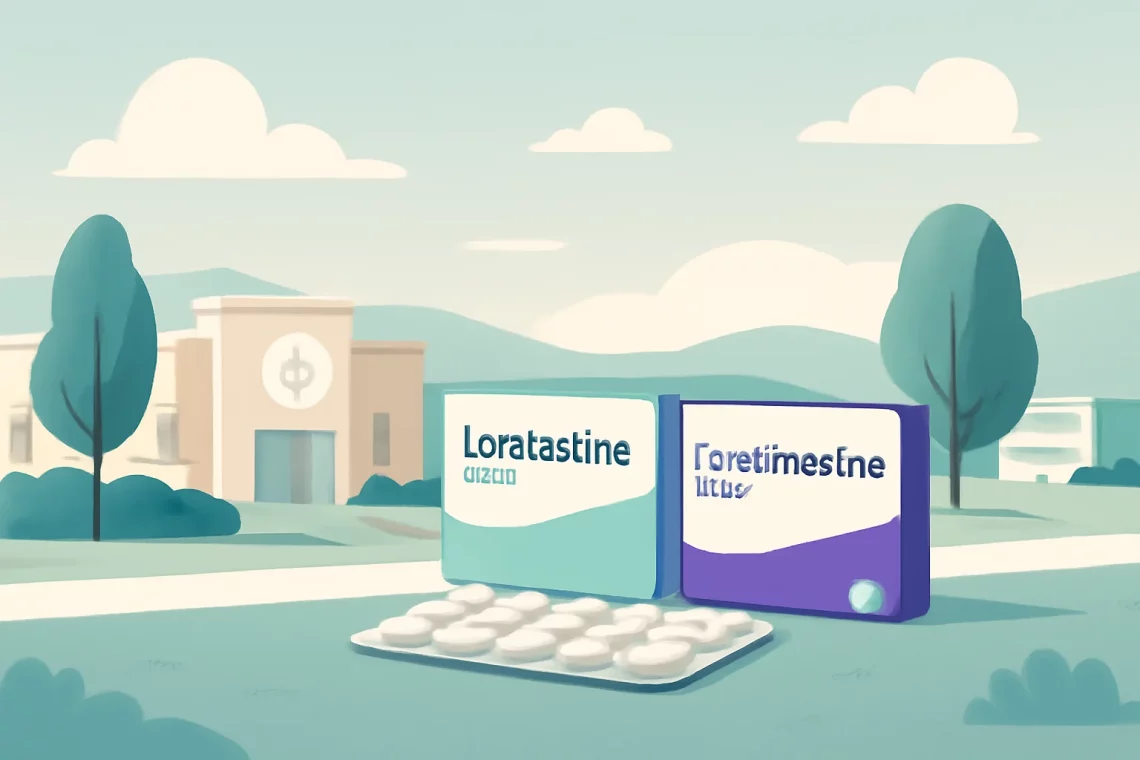
Loratadine vs Fexofenadine: Which Antihistamine is Right for You?
Allergies are a common concern for many individuals, affecting millions worldwide. As the seasons change, pollen and other allergens become prevalent, leading to a surge in allergic reactions. Symptoms such as sneezing, nasal congestion, and itchy eyes can significantly impact daily life. To combat these discomforts, various antihistamines are available, each with its unique properties and effectiveness. Among the most popular options are loratadine and fexofenadine, both of which are second-generation antihistamines. These medications are designed to alleviate allergy symptoms without causing excessive drowsiness, a common side effect associated with first-generation antihistamines.
Understanding the differences between loratadine and fexofenadine is essential for individuals seeking relief from allergies. While both medications serve similar purposes, they have distinct mechanisms of action, dosing schedules, and potential side effects. As people strive to manage their allergies effectively, it’s crucial to consider these factors when choosing the right medication. This article delves into the nuances of loratadine and fexofenadine, exploring their individual characteristics and helping readers make informed decisions about their allergy treatment options.
Loratadine: Mechanism and Benefits
Loratadine is a widely used antihistamine that belongs to the second generation of antihistamines. It works by selectively blocking peripheral H1 receptors, which are responsible for mediating allergic reactions. By inhibiting these receptors, loratadine effectively reduces symptoms such as sneezing, runny nose, and itchy eyes. One of the significant advantages of loratadine is its low sedative effect compared to first-generation antihistamines like diphenhydramine, making it a popular choice for those seeking daytime relief.
The onset of action for loratadine typically occurs within 1 to 3 hours after ingestion, providing relatively quick relief from allergy symptoms. Loratadine is available in various forms, including tablets, liquid, and dissolvable forms, allowing for flexibility in administration. The standard dosing for adults and children over six years old is usually once daily, which enhances adherence to the treatment regimen.
Another benefit of loratadine is its long duration of action, lasting up to 24 hours. This extended efficacy means that individuals can take loratadine once a day, making it convenient for those with busy lifestyles. Moreover, loratadine is generally well-tolerated, with side effects being minimal. The most common side effects include headache and fatigue, but serious adverse reactions are rare.
It’s worth noting that while loratadine is effective for treating seasonal allergies and hay fever, it may not be as effective for certain conditions, such as chronic urticaria (hives). Therefore, individuals should consult with healthcare professionals to determine the most suitable treatment for their specific allergy profile.
Fexofenadine: Mechanism and Advantages
Fexofenadine is another second-generation antihistamine that is particularly effective in treating allergic rhinitis and chronic urticaria. Like loratadine, fexofenadine works by blocking H1 receptors, but it has a slightly different pharmacological profile. Fexofenadine is known for its rapid onset of action, typically providing relief within one hour of administration, which may be beneficial for individuals seeking immediate symptom control.
One of the standout features of fexofenadine is its minimal sedative effects. It is considered one of the least sedating antihistamines available, making it an excellent option for individuals who need to remain alert throughout the day. This characteristic is particularly advantageous for those who drive or operate heavy machinery, as they may be more sensitive to the sedative effects of other antihistamines.
Fexofenadine is available in various formulations, including tablets and orally disintegrating tablets, allowing for ease of use. The standard dosing for adults and children over 12 years old is typically 60 mg twice daily or 180 mg once daily, depending on the severity of the symptoms. The flexibility in dosing helps individuals tailor their treatment to their specific needs.
Moreover, fexofenadine has been shown to have a favorable safety profile, with minimal interactions with other medications. Common side effects may include headache and nausea, but serious side effects are rare. Individuals with liver or kidney conditions should consult with healthcare providers before use, as dosage adjustments may be necessary.
Given its rapid onset and low sedative potential, fexofenadine has gained popularity among those experiencing acute allergic reactions. However, as with any medication, it’s essential for individuals to assess their symptoms and consult with healthcare professionals to determine if fexofenadine is the right choice for their allergy management.
Comparative Analysis of Loratadine and Fexofenadine
When comparing loratadine and fexofenadine, several key factors come into play, including efficacy, onset of action, duration of effects, and side effects. Both medications are effective in treating allergic symptoms, but their differences may influence individual choices.
In terms of efficacy, both loratadine and fexofenadine are effective for alleviating symptoms of allergic rhinitis and chronic urticaria. However, some studies suggest that fexofenadine may provide slightly better relief for nasal congestion, a common symptom that many allergy sufferers experience. Conversely, loratadine has been noted for its effectiveness in treating itchy eyes and sneezing.
The onset of action is another crucial difference. While loratadine typically takes 1 to 3 hours to begin working, fexofenadine can provide relief within one hour, making it a preferred option for those seeking immediate results. This rapid onset may be particularly beneficial during peak allergy seasons when exposure to allergens is high.
Both medications offer a long duration of action, with loratadine lasting up to 24 hours and fexofenadine providing relief for a similar timeframe. This means that both medications can be taken once daily, which is convenient for users.
Regarding side effects, both loratadine and fexofenadine have low incidences of sedation. However, individual responses may vary, and some users may find one medication more tolerable than the other. It’s essential for individuals to monitor their reactions and consult with healthcare providers if they experience any adverse effects.
In summary, the choice between loratadine and fexofenadine largely depends on individual preferences, symptom profiles, and the urgency of relief needed. Consulting with healthcare professionals can provide personalized guidance in selecting the most appropriate antihistamine.
Conclusion: Choosing the Right Antihistamine
Selecting the right antihistamine is crucial for effectively managing allergy symptoms. Both loratadine and fexofenadine offer unique benefits and can significantly improve the quality of life for individuals suffering from allergies. Understanding the differences between these medications can empower individuals to make informed decisions based on their specific needs.
For those seeking a medication with a rapid onset of action, fexofenadine may be the preferred choice. Its minimal sedative effects make it suitable for individuals who require alertness throughout the day. On the other hand, loratadine may appeal to those looking for a once-daily option with a long duration of action.
Ultimately, the best approach is to evaluate personal symptoms, lifestyle, and preferences while consulting with healthcare professionals. They can provide valuable insights and recommendations tailored to individual needs.
Always remember that this article is not a substitute for professional medical advice. For any health-related concerns or questions, it is essential to consult a healthcare provider who can offer personalized guidance and recommendations.




